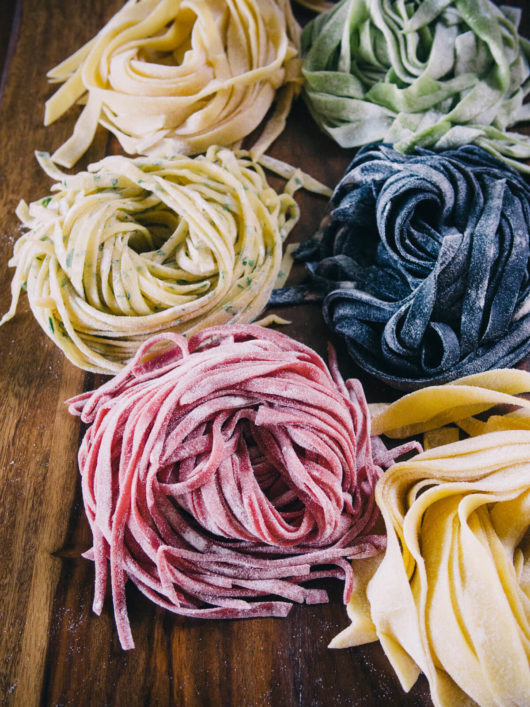
Until I started making my own pasta, I always thought homemade pasta required a special pasta maker, a lot of space to hang up curtains of noodles, and a lot of time to devote in the kitchen. I couldn’t have been more wrong.
Homemade pasta can be had with the most basic of kitchen implements: a smooth surface, a rolling pin, a sharp knife, and a half-hour of hands-on time. Small appliances can shave off a few minutes if you have a mixer to knead the dough or a machine to roll it out, but once you get the hang of homemade pasta, your hands can be just as quick.
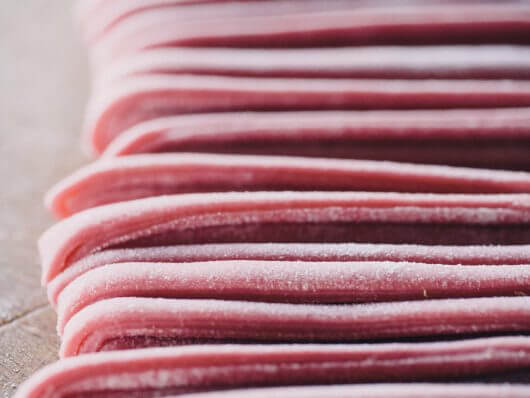
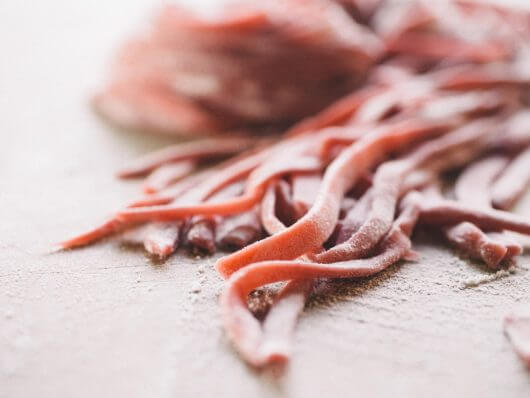
It’s so easy that I’ll sometimes roll out a batch of dough right before dinner. My favorite is handmade linguine or fettucine. I love the rustic quality of hand-cut pasta — how each noodle is just slightly different in thickness or length. Compared to the dried boxed pasta you can buy in the store, fresh pasta is so luxurious on its own that it needs little more than a good sauce to satisfy.
Quite often, I find myself making several batches of pasta that I can store and preserve for future meals. When it comes to preserving pasta, I am a big proponent of freezing rather than drying for a few reasons.
Frozen pasta retains all the color, flavor, and texture of fresh pasta. It cooks faster. It won’t get moldy, since you can freeze it right away. It saves space, since you won’t need to drape it over wooden dowels or the backs of chairs while you wait for the pasta to fully dry. And it won’t break during storage, a big issue with pasta that’s dry and brittle, especially if you lack adequate pantry space.
So, if you find that you can’t use up all the pasta at once, I wholly recommend freezing the unused portions. They don’t even need to be thawed when you’re ready to use them; simply drop the frozen pasta into a boiling pot of salted water and add a couple extra minutes to the cooking time.
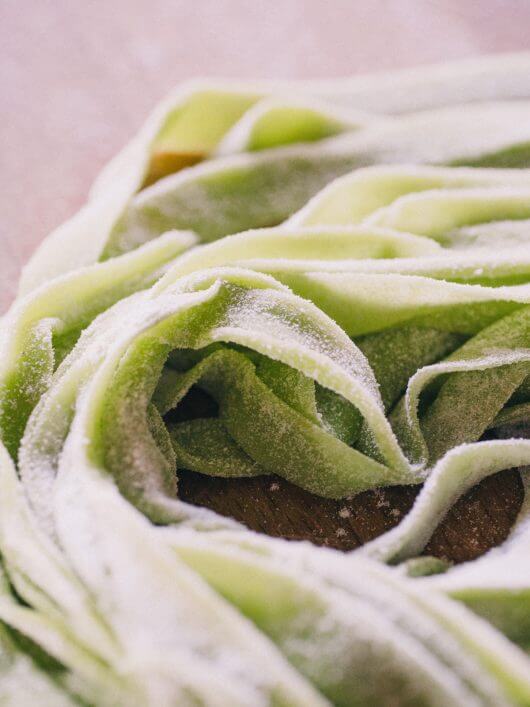
For homemade pasta, my basic ratio is 2 cups flour to 3/4 cup liquid. This makes 1 pound of pasta, or 4 servings.
I use the “scoop and sweep” method for measuring flour: scoop a heaping cup of flour, then sweep a straightedge across the top. If your flour has been compacted at the bottom of a bag or canister, fluff it up with a fork before scooping.
An unbleached all-purpose flour works well for the dough. There are special flours you can use to achieve a slightly different texture, like Italian “00” (doppio zero) or semolina flour, but in my opinion, you can make a mighty fine dough with the all-purpose flour you already have in the kitchen.
The liquid consists of eggs, which give “bite” and body to the pasta; olive oil, which adds silkiness and a subtle richness; and if you’re so inclined, vegetable juice or fresh herbs for added color or flavor.
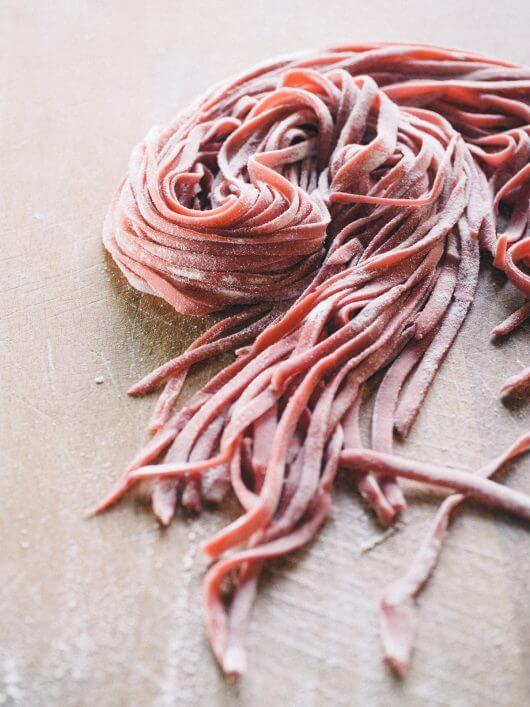
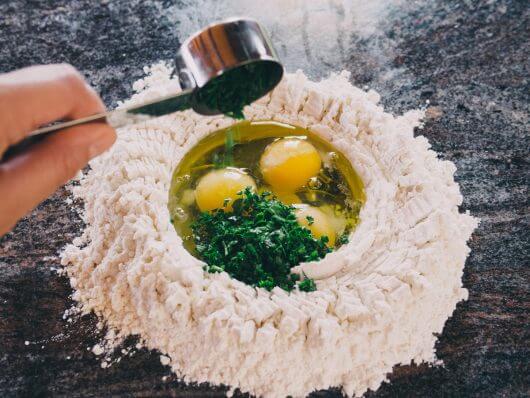
I start my pasta the traditional way — by heaping flour onto a table and whisking in the eggs — but beginning pasta makers may be better off doing that in a bowl until the process becomes second nature. You might have to wash an extra dish, but at least you won’t get egg all over your shoe.
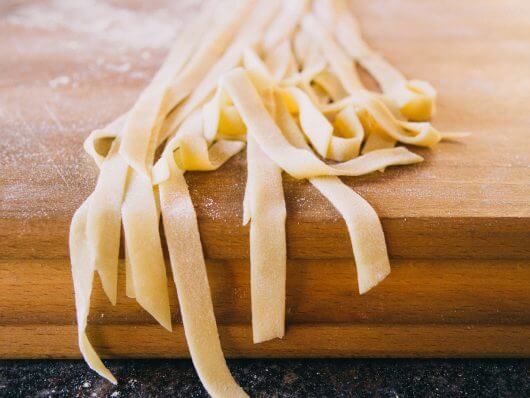
Fresh Homemade Egg Pasta
Makes 1 pound
Ingredients
2 cups all-purpose flour, plus more for rolling and dusting
3 large eggs
2 tablespoons olive oil
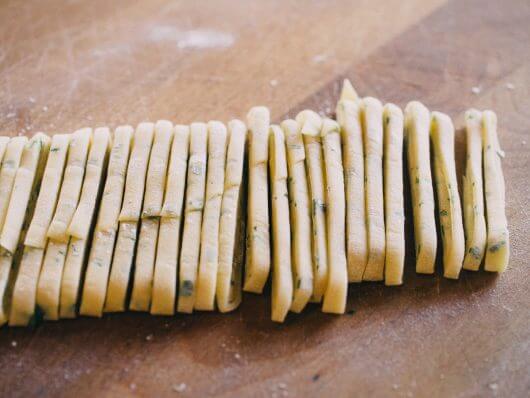
Fresh Homemade Herb Pasta
Makes 1 pound
Ingredients
2 cups all-purpose flour, plus more for rolling and dusting
3 large eggs
2 tablespoons minced fresh herbs (try basil or parsley)
2 tablespoons olive oil
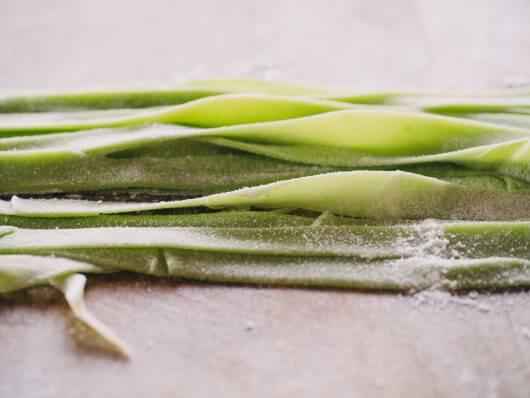
Fresh Homemade Vegetable Pasta
Makes 1 pound
Ingredients
2 cups all-purpose flour, plus more for rolling and dusting
2 large eggs
1/4 cup vegetable juice (try beet, spinach, or carrot juice, or even tomato paste)
1 1/2 tablespoons olive oil
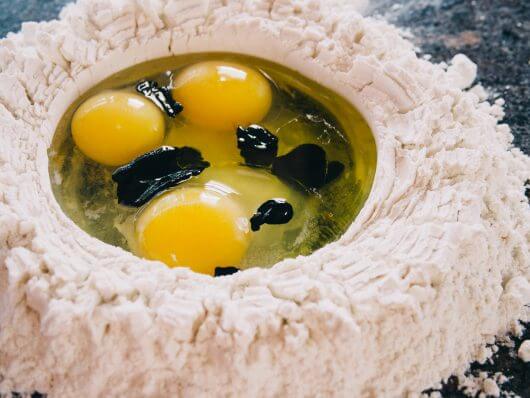
Fresh Homemade Squid Ink Pasta
Makes 1 pound
Ingredients
2 cups all-purpose flour, plus more for rolling and dusting
3 large eggs
1 1/2 tablespoons olive oil
8 grams (or 2 x 4g packets) squid ink (I use this brand)
Master Method
Mound the flour onto your work surface and make a large well in the center. (Tip: I use my measuring cup to carve out a deep, perfect well about 5 inches in diameter.) Crack each egg into the well, followed by the remaining ingredients.
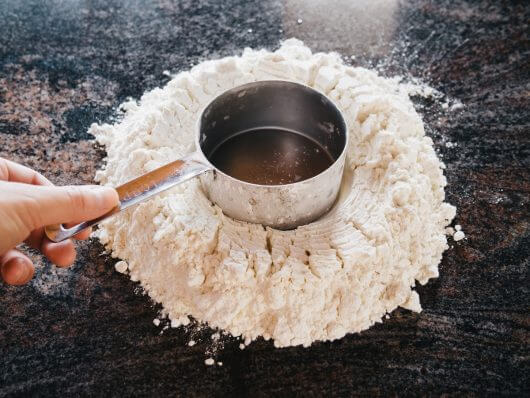
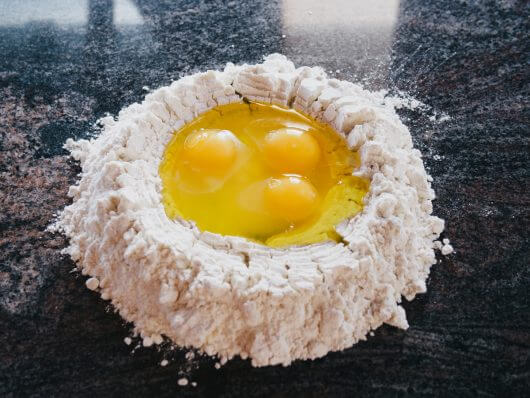
Using a fork, beat the eggs and oil (plus any herbs, vegetable juice, or squid ink, if using) until well combined.
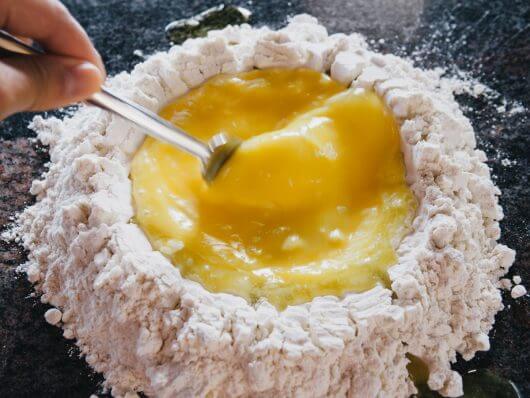
Little by little, add the flour to the egg mixture and beat until all of it is incorporated. Mix the dough with your fork until it begins to take shape and you can gather it into a loose ball.
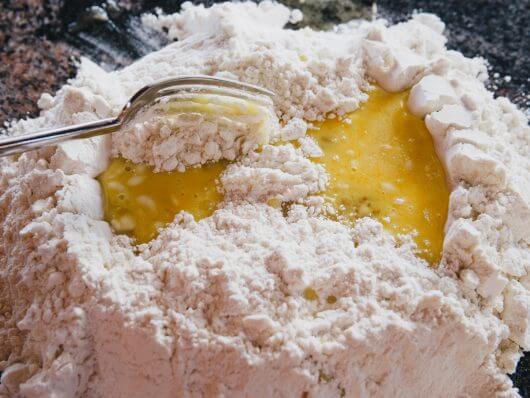
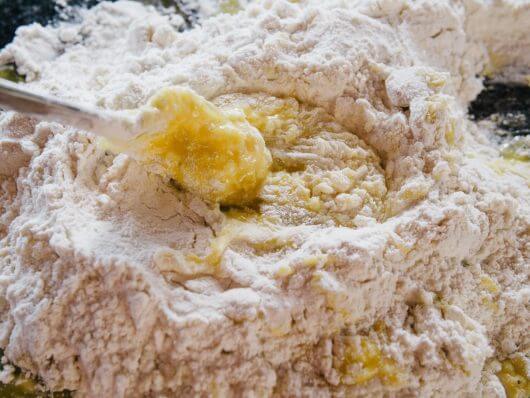
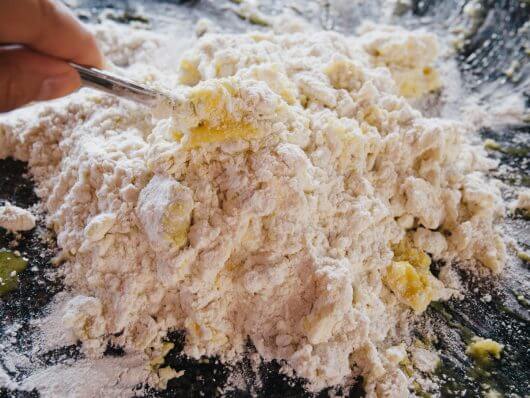
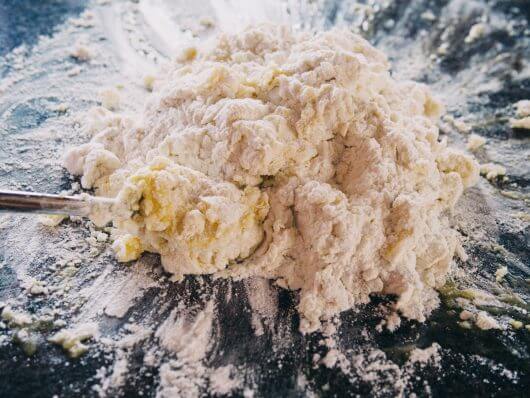
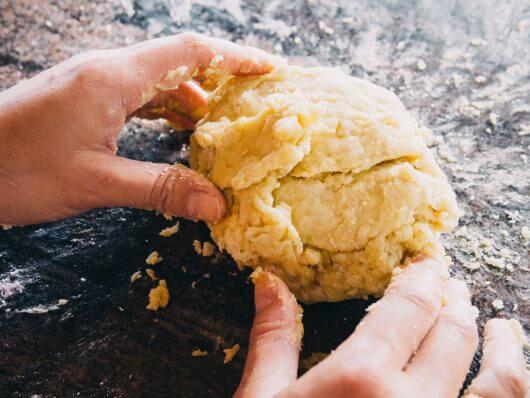
With your hands, start kneading the dough. It will feel soft and jiggly at this stage, but keep kneading for about 10 minutes until the dough firms up. I like to push the dough down and out with the heels of my hands, then fold it back over onto itself, rotate a quarter-turn, and push down again.
There’s no “proper” method for kneading; think of it as a really intense massage. You want to work the dough with your hands to develop the gluten, which gives it strength and elasticity. Within a few minutes, you’ll notice the dough becoming harder and harder to knead — making pasta can be a great workout in the kitchen!
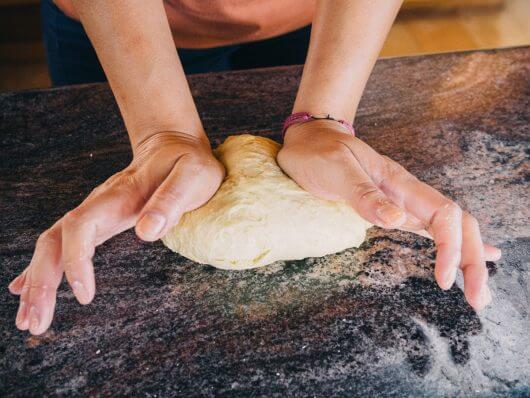
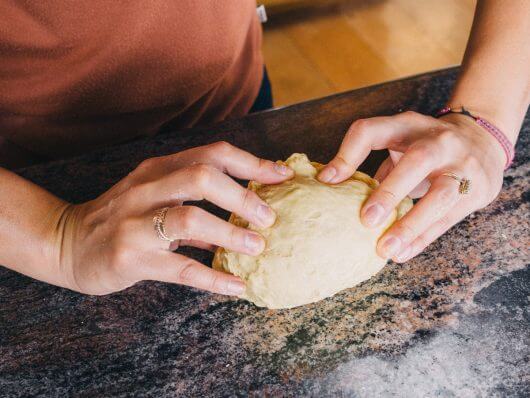
If any excess flour or dough crumbs remain on your work surface and won’t stick to the dough, simply scrape them off with a dough scraper or straightedge.
When your dough looks smooth and no longer feels sticky, shape it into a ball and cover with a kitchen towel to keep it from drying out. Let the dough rest for at least 30 minutes.
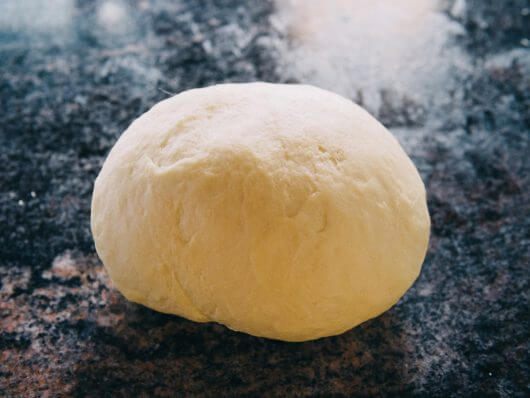
Cut the dough into quarters. Keep the rest of the dough covered with a towel while you work on each piece.
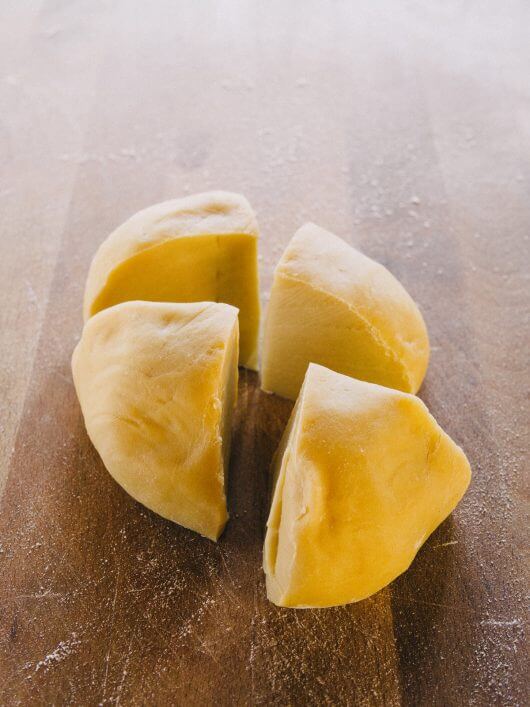
On a floured surface, roll out the dough as thin as you can get it — you should be able to see your hands through the pasta sheet when you pick it up. Dust liberally with more flour to prevent sticking.
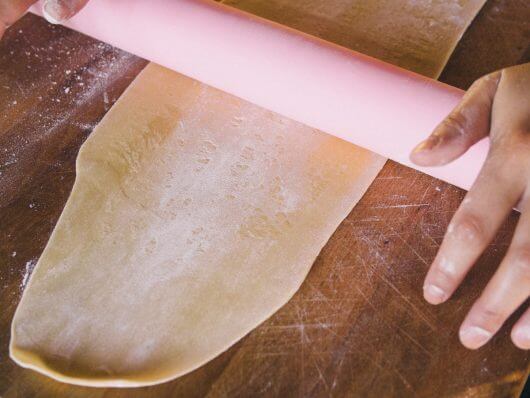
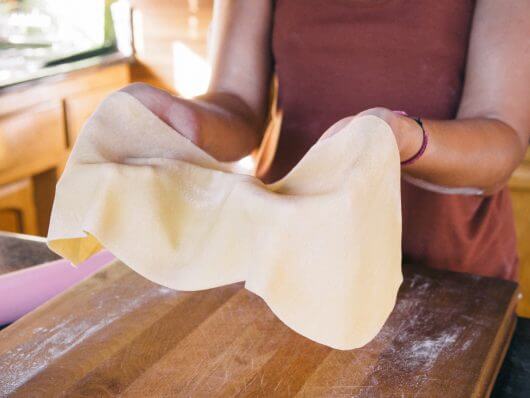
Fold the pasta sheet a few times over itself (as if you were folding a letter) and cut it to your desired width. Choose your favorite:
- Spaghetti: 1/16 inch
- Linguine: 1/8 inch
- Tagliatelle: 3/16 inch
- Fettucine: 1/4 inch
- Pappardelle: 1 inch
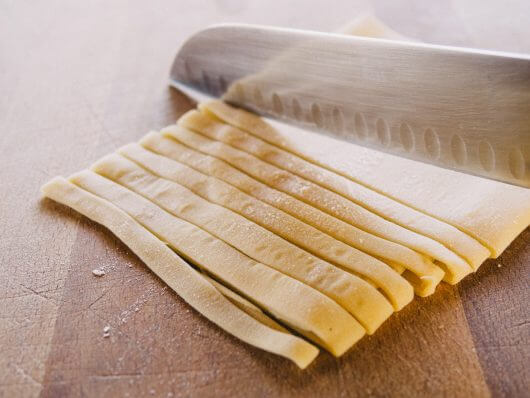
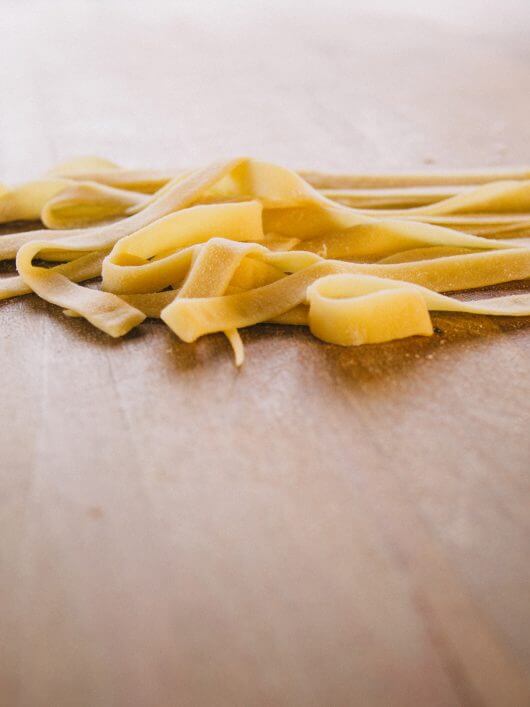
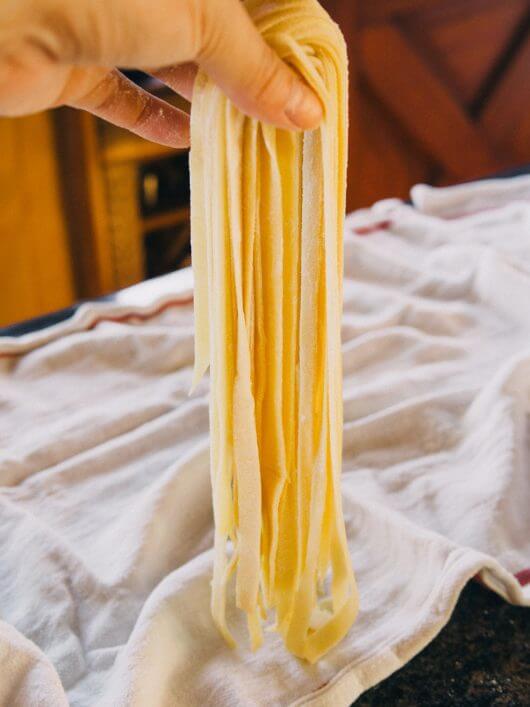
Shake the noodles out, toss with a little flour, then let them rest in loose mounds on a towel while you roll out the remaining dough. When you’ve finished cutting all the noodles, simply drop them into a boiling pot of salted water. Fresh pasta cooks in 2 to 5 minutes, depending on thickness.
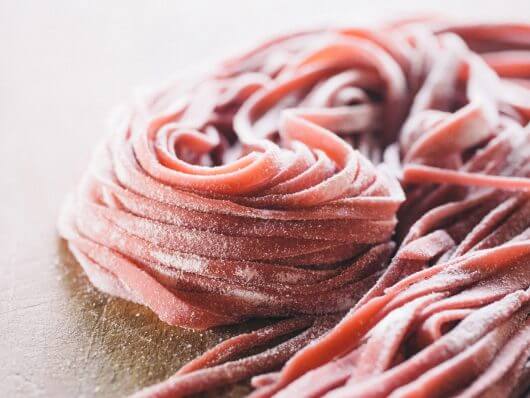
If you’ll be storing the pasta to use later, lay the noodles out in long strands to rest and dry out a little. Pick up a single-serving portion of noodles and twirl into a nest. Repeat with the remaining noodles, then place the nests on a cookie sheet and freeze for about 1 hour. This keeps the pasta from clumping together in storage; once they’ve firmed up, transfer to a freezer-proof bag or container and freeze again.
Frozen pasta can go straight into boiling water and takes a little longer to cook, but otherwise comes out exactly like fresh pasta.
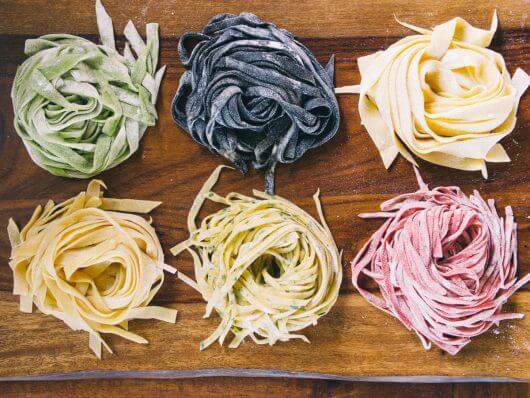
Pictured above, clockwise from top left: spinach pasta, squid ink pasta, carrot pasta, beet pasta, parsley pasta, and egg pasta.
Recipe Sources
Bellemain Stainless Steel Measuring Cup Set (similar) | Delicioso Squid Ink Sachets | John Boos Maple Wood Edge Grain Cutting Board (similar) | Trudeau Silicone French Rolling Pin (similar) | Zwilling J.A. Henckels Professional “S” 7-Inch Hollow Edge Santoku Knife (similar)
This post updated from an article that originally appeared on December 5, 2014.
The post Fresh Homemade Pasta (Using What You Already Have in the Kitchen) appeared first on Garden Betty.
from Garden Betty https://ift.tt/2pO15yD
 Turn on your JavaScript to view content
Turn on your JavaScript to view content